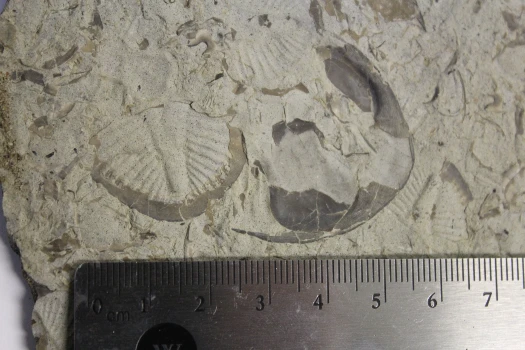Geology Challenge
Stop #4: Sea You Later!
Most of Ontario, south of the Canadian Shield, was covered by a vast shallow sea 570-240 million years ago. Imagine a steamy tropical climate complete with long extinct exotic species interacting in a saltwater soup!
The seas were dominated by molluscs, bivalves (a type of mollusc), starfish, and the most intriguing animal of the Paleozoic seas: the trilobite. As the climate changed, these creatures disappeared, but we can still find their remains today that reveal a glimpse of Ontario’s ancient tropical past.
“It’s sedimentary, my dear Watson!”
Sedimentary rocks form when loose particles of clay, silt, sand or gravel are transported by water, ice or wind and become cemented together by pressure (lithification).
Limestone is light in colour with no visible grains. It is a sedimentary rock which is made of calcium carbonate produced, or precipitated, when seas dry up.
As the calcium carbonate precipitated out of the drying sea, it sometimes formed around the hard shells and skeletons of sea creatures, preserving them as fossils in the rock record.
Under your feet, beneath the load of glacial till lies the solid limestone bedrock of an ancient sea!
Challenge: Fossil Finder
Sleuth Awenda’s beaches for the fossil evidence of the ancient inland seas that once covered the land! Make a rubbing of the fossil by placing paper over top of the fossil and gently rubbing a pencil over it.
Next Up: Head to Stop #5
- Head back toward the Beach Trail and walk approximately 200 meters west along the trail towards Pet Beach.
- Look for the beach entrance marked by a Pet Beach sign and a “Warning: Drowning” sign, then continue approximately 15 meters down the path leading to the water.
- Find the wooden post labelled Stop #5, and click on Next Up: Stop #5 below.

